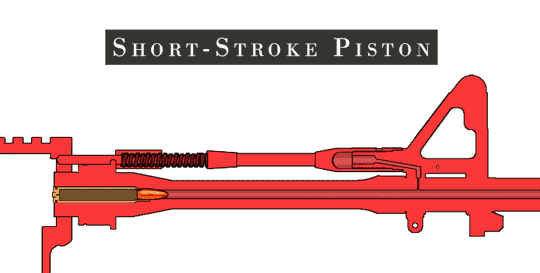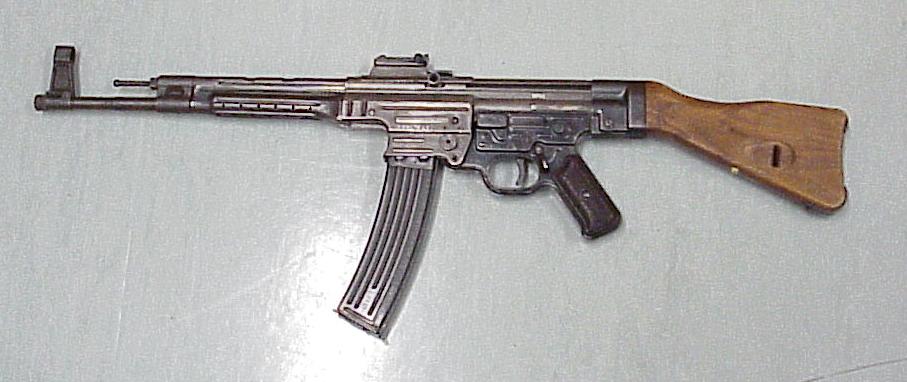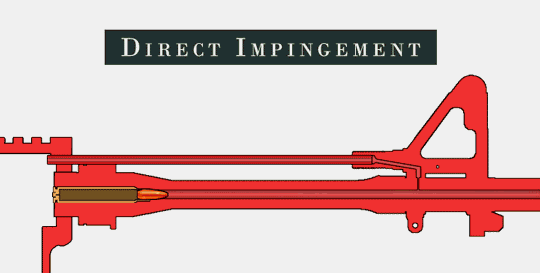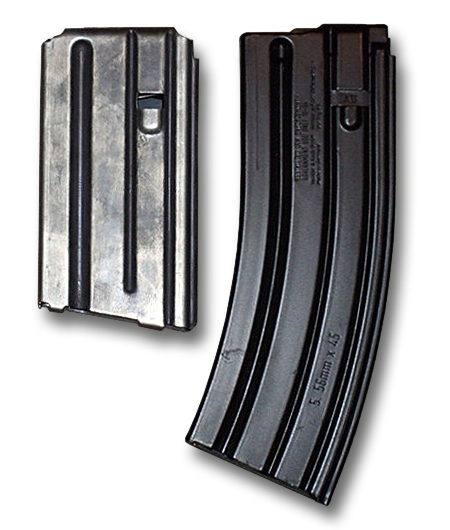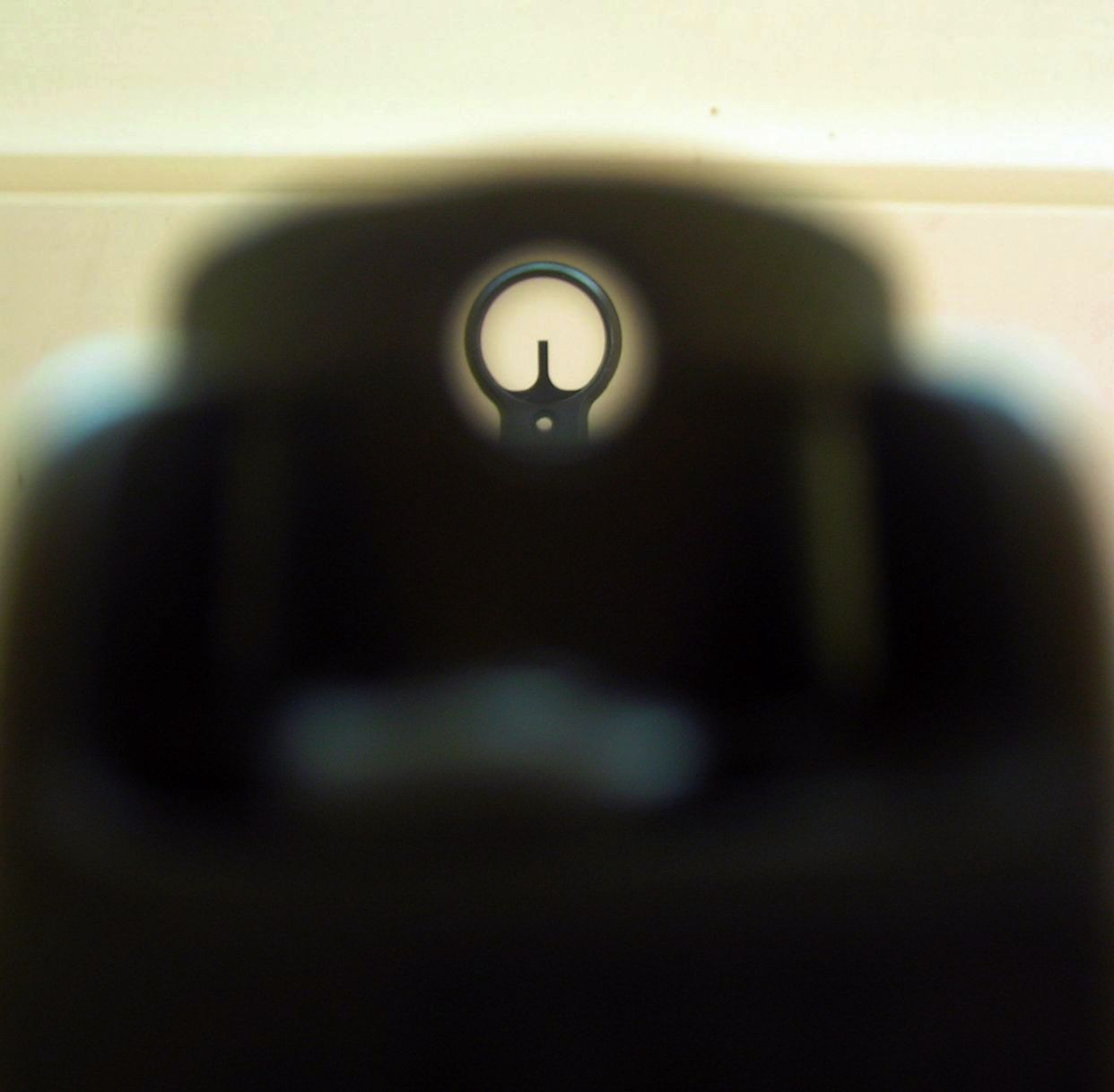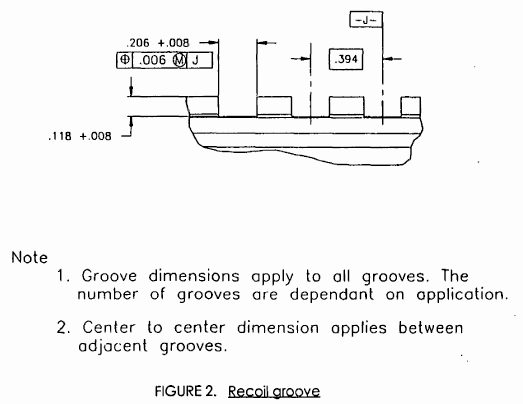|
SIG 516
The SIG Sauer SIG516 is an assault rifle manufactured by SIG Sauer, chambered in 5.56×45mm NATO. History The SIG Sauer SIG516 shares lineage with the Heckler & Koch HK416. The principal firearms engineers for the SIG516 were Robert Hirt and Chris Sirois. Following his time with Heckler & Koch, Hirt was recruited by SIG Sauer to work with then SIG engineer Chris Sirois on an improved version of the HK416. The SIG516 omitted many proprietary HK416 components that were exchanged for standard (M4 carbine mil spec conform) components. Other HK416 issues like the (at the time) high cyclic rate, which causes lower life cycle, a gas vent, which showed up in low light conditions, and safety issues (i.e. the need for a firing pin safety) were also addressed. Hirt and Sirois later designed the SIG716 and SIG MCX/SIG MPX. They were later recruited by Caracal to develop the CAR 816 series. Design details Operating mechanism The SIG516 is a multi-caliber assault rifle capable of selective ... [...More Info...] [...Related Items...] OR: [Wikipedia] [Google] [Baidu] |
Assault Rifle
An assault rifle is a select fire rifle that uses an intermediate cartridge, intermediate-rifle cartridge and a Magazine (firearms), detachable magazine.C. Taylor, ''The Fighting Rifle: A Complete Study of the Rifle in Combat'', F.A. Moyer ''Special Forces Foreign Weapons Handbook'', R.J. Scroggie, F.A. Moyer ''Special Forces Combat Firing Techniques'', Musgave, Daniel D., and Thomas B. Nelson, ''The World's Assault Rifles'', vol. II, The Goetz Company, Washington, D.C. (1967): 1 Assault rifles were first put into mass production and accepted into widespread service during World War II. The first assault rifle to see major usage was the German StG 44, a development of the earlier Maschinenkarabiner 42(H), Mkb 42.''Firearms: The Life Story of a Technology'', by Roger Pauly. Greenwood Publishing Group. 2004. pp. 145–146 [...More Info...] [...Related Items...] OR: [Wikipedia] [Google] [Baidu] |
Direct Impingement
Direct impingement is a type of gas operation for a firearm that utilizes gas from a fired cartridge to impart force on the bolt carrier or slide assembly to cycle the action. Firearms using direct impingement are theoretically lighter, more accurate, and less expensive than firearms using cleaner and cooler gas piston systems. Advantages Firearms with a direct impingement design can, in principle, be constructed lighter than piston-operated designs. Because high-pressure gas acts directly upon the bolt and carrier in a direct impingement system, it does not need a separate gas cylinder, piston, and operating rod assembly of a conventional piston-operated system, only requiring a gas tube to channel gas from the barrel back towards the action. This saves weight, lowers manufacturing costs, and reduces the mass of the operating parts, and thereby the wear on mechanical parts due to movement. By removing the gas piston, the potential amount of moving mass is also lowered, decreas ... [...More Info...] [...Related Items...] OR: [Wikipedia] [Google] [Baidu] |
SR-25 Pattern Magazine
An SR-25, AR-10 or LR-308 pattern magazine is a type of detachable firearm magazine based on the original Armalite AR-10 "waffle" magazine design introduced in the late 1950s, used for .308 Winchester and 7.62×51mm NATO cartridges. The design has been used on many AR-10 derivatives (generally referred to as AR-308 style rifles), for instance in the Knight's Armament SR-25 and DPMS Panther LR-308, as well as bolt-action rifles such as the Mossberg MVP .308, Ruger Precision Rifle and Q FIX. Aftermarket magazines are produced by Magpul, Lancer Systems, and others. Not all AR-308 rifles use magazines compatible with the SR-25 pattern. For example, HK417/MR308/MR762 uses a proprietary design. Notably, Armalite switched from their original pattern magazines to modified M14 magazines in 1996 with their new AR-10B model, but reintroduced their original (SR-25 pattern) magazine design with the AR-10A model in 2012. Firearms compatible with SR-25 pattern magazines AR-10/AR-308 ty ... [...More Info...] [...Related Items...] OR: [Wikipedia] [Google] [Baidu] |
Battle Rifle
A battle rifle is a service rifle chambered to fire a fully powered cartridge. The term "battle rifle" is a retronym created largely out of a need to differentiate automatic rifles chambered for fully powered cartridges from automatic rifles chambered for intermediate cartridges, which were later categorized as assault rifles. Battle rifles were most prominent from the 1940s to the 1970s, when they were used as service rifles. While modern battle rifles largely resemble modern assault rifle designs, which replaced battle rifles in most roles, the term may also describe older military full-power semi-automatic rifles such as the M1 Garand, SVT-40, Gewehr 41, Gewehr 43, Type 4 rifle, Type 4, FN Model 1949, and MAS-49 rifle, MAS-49. History World War I Semi-automatic First examples of semi-automatic fully powered-cartridge rifles used in World War I are the Meunier rifle, Meunier A6, Fusil Automatique Modèle 1917 in 8×50mmR Lebel and the Winchester Model 1910 in .401 Wincheste ... [...More Info...] [...Related Items...] OR: [Wikipedia] [Google] [Baidu] |
NATO
The North Atlantic Treaty Organization (NATO ; , OTAN), also called the North Atlantic Alliance, is an intergovernmental organization, intergovernmental Transnationalism, transnational military alliance of 32 Member states of NATO, member states—30 European and 2 North American. Established in the aftermath of World War II, the organization implements the North Atlantic Treaty, signed in Washington, D.C., on 4 April 1949. NATO is a collective security system: its independent member states agree to defend each other against attacks by third parties. During the Cold War, NATO operated as a check on the threat posed by the Soviet Union. The alliance remained in place after the dissolution of the Soviet Union and the Warsaw Pact, and has been involved in military operations in the Balkans, the Middle East, South Asia, and Africa. The organization's motto is . The organization's strategic concepts include Deterrence theory, deterrence. NATO headquarters, NATO's main headquarter ... [...More Info...] [...Related Items...] OR: [Wikipedia] [Google] [Baidu] |
Box Magazine
A magazine, often simply called a mag, is an ammunition storage and feeding device for a repeating firearm, either integral within the gun (internal/fixed magazine) or externally attached (detachable magazine). The magazine functions by holding several cartridges within itself and sequentially pushing each one into a position where it may be readily loaded into the barrel chamber by the firearm's moving action. The detachable magazine is sometimes colloquially referred to as a " clip", although this is technically inaccurate since a clip is actually an accessory device used to help load ammunition into a magazine or cylinder. Magazines come in many shapes and sizes, from integral tubular magazines on lever-action and pump-action rifles and shotguns, that may hold more than five rounds, to detachable box magazines and drum magazines for automatic rifles and light machine guns, that may hold more than fifty rounds. Various jurisdictions ban what they define as " high-capac ... [...More Info...] [...Related Items...] OR: [Wikipedia] [Google] [Baidu] |
STANAG Magazine
A STANAG magazine or NATO magazine is a type of detachable firearm magazine proposed by NATO in October 1980. Shortly after NATO's acceptance of the 5.56×45mm NATO rifle cartridge, Draft Standardization Agreement ( STANAG) 4179 was proposed in order to allow NATO members to easily share rifle ammunition and magazines down to the individual soldier level. The U.S. M16 rifle's magazine proportions were proposed for standardization. Many NATO members, but not all, subsequently developed or purchased rifles with the ability to accept this type of magazine. However, the standard was never ratified and remains a "Draft STANAG". Magazines The STANAG magazine concept is only an interface, dimensional and controls (magazine latch, bolt stop, etc.) requirement. Therefore, it not only allows one type of magazine to interface with various weapon systems, but also allows STANAG magazines to be made in various configurations and capacities. The standard capacities of STANAG-compatible mag ... [...More Info...] [...Related Items...] OR: [Wikipedia] [Google] [Baidu] |
Iron Sight
Iron sights are a system of physical alignment markers used as a sighting device to assist the accurate aiming of ranged weapons such as firearms, airguns, crossbows, and bows, or less commonly as a primitive finder sight for optical telescopes. Iron sights, which are typically made of metal, are the earliest and simplest type of sighting device. Since iron sights neither magnify nor illuminate the target, they rely completely on the viewer's naked eye and the available light by which the target is visible. In this respect, iron sights are distinctly different from optical sight designs that employ optical manipulation or active illumination, such as telescopic sights, reflector (reflex) sights, holographic sights, and laser sights. Iron sights are typically composed of two components mounted perpendicularly above the weapon's bore axis: a 'rear sight' nearer (or 'proximal') to the shooter's eye, and a 'front sight' farther forward (or 'distal') near the muzzle. During aim ... [...More Info...] [...Related Items...] OR: [Wikipedia] [Google] [Baidu] |
Picatinny Rail
The 1913 rail (MIL-STD-1913 rail) is an American rail integration system designed by Richard Swan that provides a mounting platform for firearm accessories. It forms part of the NATO standard STANAG 2324 rail. It was originally used for mounting of telescopic sights atop the receivers of larger caliber rifles. Once established as United States Military Standard, its use expanded to also attaching other accessories, such as: iron sights, tactical lights, laser sights, night-vision devices, reflex sights, holographic sights, foregrips, bipods, slings and bayonets. An updated version of the rail is adopted as a NATO standard as the STANAG 4694 NATO Accessory Rail. History Attempts to standardize the Weaver rail mount designs date from work by the A.R.M.S. company and Richard Swanson in the early 1980s. Specifications for the M16A2E4 rifle and the M4E1 carbine received type classification generic in December 1994. These were the M16A2 and the M4 modified wi ... [...More Info...] [...Related Items...] OR: [Wikipedia] [Google] [Baidu] |
M16A2 Rifle
The M16 (officially Rifle, Caliber 5.56 mm, M16) is a family of assault rifles adapted from the ArmaLite AR-15 rifle for the United States Armed Forces, United States military. The original M16 was a 5.56×45mm NATO, 5.56×45mm automatic rifle with a 20-round magazine. In 1964, the XM16E1 entered US military service as the M16 and in the following year was deployed for jungle warfare operations during the Vietnam War. In 1969, the M16A1 replaced the M14 rifle to become the US military's standard service rifle. The M16A1 incorporated numerous modifications including a bolt-assist ("forward-assist"), chrome-plated bore, protective reinforcement around the magazine release, and revised flash hider. In 1983, the United States Marine Corps, US Marine Corps adopted the M16A2 rifle, and the United States Army, US Army adopted it in 1986. The M16A2 fires the improved 5.56×45mm (M855/SS109) cartridge and has a newer adjustable rear sight, case deflector, heavy barrel, improved ha ... [...More Info...] [...Related Items...] OR: [Wikipedia] [Google] [Baidu] |
Colt AR-15
The Colt AR-15 is a product line of magazine-fed, gas-operated, semi auto rifle manufactured by Colt's Manufacturing Company ("Colt") in many configurations. The rifle is a derivative of its predecessor, the lightweight ArmaLite AR-15, an automatic rifle designed by Eugene Stoner and other engineers at ArmaLite in 1956. Colt currently owns the ''AR-15'' trademark and uses it for its line of semi-automatic AR-15 rifles. History Due to financial problems, and limitations in terms of manpower and production capacity, ArmaLite sold the AR-15 design and the AR-15 trademark along with the ArmaLite AR-10 to Colt's Manufacturing Company in 1959. Some of the first sales were of fully automatic Colt AR-15s to the Federation of Malaya and the United Kingdoms in 1959. Colt started selling the semi-automatic version of the M16 rifle as the Colt AR-15 in 1964. The first mass production version was the Colt AR-15 Sporter, in .223 Remington, with a 20-inch barrel, issued with ... [...More Info...] [...Related Items...] OR: [Wikipedia] [Google] [Baidu] |
